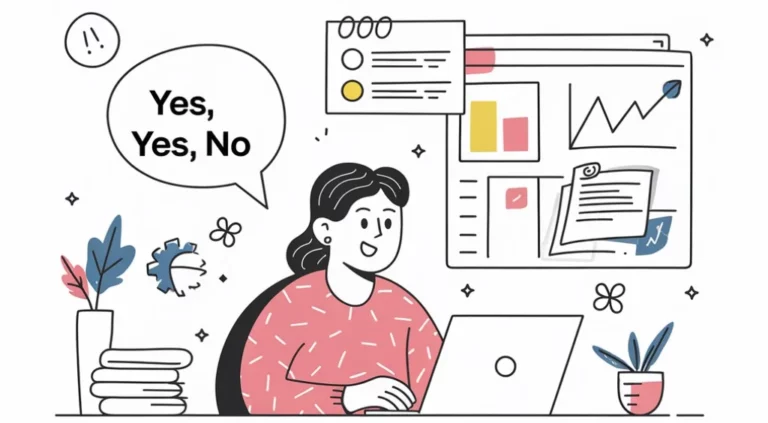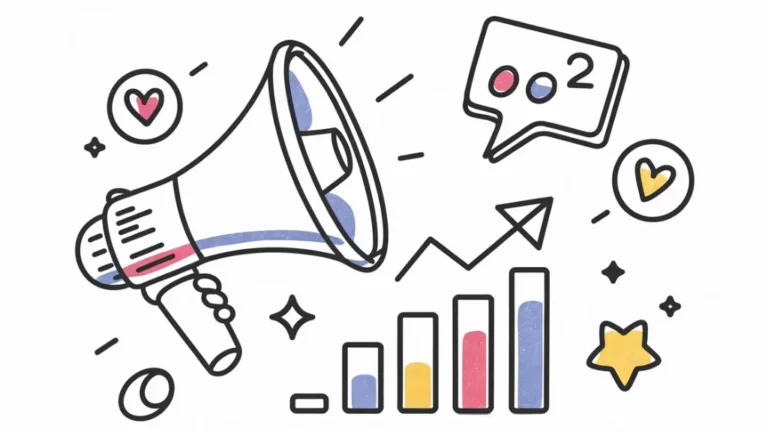So, you've got a hefty $50,000 to play with for SEO and marketing, which is fantastic! But here's the thing, throwing money around without a plan is like trying to cook a gourmet meal blindfolded. You might end up with something edible, but it's probably not gonna be pretty. A strategic plan is the key to making this budget work wonders for you. It's not just about spending; it's about investing smartly and getting the best bang for your buck.
What Elements Should Form Your Core SEO Strategy?
To build a solid SEO foundation, with a solid five-figure budget, you definitely need to start by considering these key areas.
1. How Crucial Is Technical SEO for a New Website? (Budget: $5,000)
Technical SEO is like making sure your car is in tip-top shape before you hit the road. It's the nuts and bolts stuff that ensures search engines can easily find, understand, and index your site. This can be complex, but it's critical for long-term success. Here's what to focus on:
- Site Speed Optimization: Nobody likes a slow website, not even Google. Aim for loading times under 3 seconds, and use tools like Google PageSpeed Insights to get you there. This isn't just about user experience; it's also a ranking factor.
- Mobile Optimization: With more people using their phones than ever before, having a mobile-friendly website is non-negotiable. It should look great and work flawlessly on any device. Think responsiveness!
- Crawl and Indexing Fixes: Are there broken links that search engines can't crawl? Tools like Screaming Frog or Ahrefs can help pinpoint these issues. They help identify all the errors, broken links, or missing metadata. Fix them up because you don't want search engines getting lost on your site.
- Secure Website (HTTPS): This one's a no-brainer! HTTPS is a must for credibility and ranking. It's the standard for secure websites and Google penalizes websites without it. Plus, it builds user trust, which is pretty important too!
2. What’s the Key to Effective Keyword Research? (Budget: $3,000)
Keywords are the bread and butter of SEO. You need to figure out what your audience is searching for, so you can be the answer. That means going beyond simple keywords and understanding search intent. Here are some key steps:
- Identify High-Intent Keywords: Don't just go for broad terms that get a lot of traffic. Focus on keywords that people use when they're ready to buy or take action.
- Use SEO Tools: Tools like SEMrush or Ahrefs can help you find those golden keywords that your competitors are using, plus they allow you to target long-tail phrases. These phrases are often less competitive and more specific, meaning you can attract the right kind of audience.
3. How Can On-Page SEO and Content Optimization Boost Visibility? (Budget: $4,000)
On-page SEO is all about making sure your pages are optimized for search engines and users. This can be the difference between your website being on the first page of Google or lost in the depths of the internet.
- Proper Metadata: Title tags and meta descriptions need to be keyword-rich and compelling. Make them work for you. They're your website's first impression in the search results.
- Schema Markup: Use schema markup to give search engines more context about your pages and boost visibility. It is like adding extra information to your results, allowing for rich snippets and more chances of grabbing a user's attention.
- Internal Linking: Strategically link between your pages to improve navigation and spread your site's authority. It helps users and search engines find related content, making it a win-win situation.
How Can You Score High-Quality Backlinks?
Backlinks are essentially votes of confidence from other websites, and they're super important for boosting your rankings. The higher the quality of these backlinks, the more authority your website gains. You need a good strategy to attract them.
1. Why is Digital PR Crucial For Backlinks? (Budget: $10,000)
Digital PR is one of the quickest paths to acquiring powerful backlinks. It's like having a megaphone to shout about your business to the world. Partnering with the right PR agency or freelancer can help you do that.
- Thought-Leadership Articles: Get your content published on top industry websites. This establishes you as an authority and gets you backlinks from reputable sources.
- Media Mentions through HARO: Use HARO (Help a Reporter Out) to connect with journalists looking for sources. It's a great way to get media mentions and backlinks from high-authority news sites.
2. Can Guest Posting Be a Good Strategy? (Budget: $6,000)
Guest posting is like making new friends in your industry, except you're bringing great content to the table.
- Collaborate with Niche Blogs: Find blogs and websites in your niche that are willing to publish your guest posts. But make sure you're providing value and not just angling for backlinks. This is a two-way street: they get great content and you get a relevant backlink.
3. Should You Focus on Industry Awards? (Budget: $4,000)
Winning awards, or even just getting nominated, is great for both backlinks and credibility. Think of it as the marketing equivalent of a gold star, it adds significant appeal to any business.
- Allocate Budget for Awards: Factor in application fees and PR efforts to promote your achievements. Getting the recognition is great, but promoting it is vital. It not only drives traffic to your website but also builds trust with your audience.
How Long Does It Take to See Ranking Improvements?
Patience is key when it comes to SEO. It's not a sprint; it's more like a marathon. Let’s break down what you can expect in the short, mid and long terms.
What Can You Expect in the First 0-3 Months?
This is all about laying the groundwork, as we've seen, so don't expect to top Google overnight.
- Focus on Building Foundation: Your focus should be on all the basic SEO elements like technical fixes and on-page SEO. It's like building a house, you have to start with a solid foundation.
- Launch Paid Ad Campaigns: Paid ads can give you a quick boost in traffic and brand awareness. It's a good idea to get the ball rolling while you're waiting for your SEO efforts to kick in.
How Will Your Progress Look from 3-6 Months?
Now you will start seeing the fruits of your labor.
- Begin Seeing Results: This is where you should start seeing the impact of your backlinking, content and organic improvements efforts. This can be a really exciting time because you're starting to see things come together.
- Target Low-Competition Keywords: Focus on dominating niche search engine results pages (SERPs) with low-competition keywords, this means you'll be more likely to rank higher for those terms.
What Are the Long-Term Expectations from 6-12 Months?
This is where the real long-term organic results start to show and is the point of diminishing returns.
- Rank for Competitive Keywords: You can now start targeting competitive keywords. This is where all your hard work will really pay off.
- Build Domain Authority: This is where you reap the benefits of consistent link building and content creation. The stronger your domain authority is, the easier it will be to rank for even more competitive terms.
What Marketing Channels Should Be on Your Radar?
SEO is important, but it's just one piece of the puzzle. You need other channels to create a comprehensive marketing strategy.
1. Why Should You Invest in Paid Ads for Immediate Traffic? (Budget: $12,000)
Paid ads can bring in immediate traffic, but it's important to use them strategically and not just hope for the best.
- Google Ads ($7,000): Target high-intent keywords with pay-per-click (PPC) campaigns. This means that you are going to be targeting the most valuable audience to get the most valuable conversions.
- Social Media Ads ($5,000): Use platforms like LinkedIn for B2B leads or Instagram for B2C engagement, depending on your target audience. It's about getting in front of the right people, in the right places.
2. How Can Content Marketing Help You Grow Organically? (Budget: $8,000)
Content marketing is like planting seeds that grow into a beautiful garden over time. It's all about creating valuable content that attracts and engages your audience, in return drawing traffic to your website.
- Publish Evergreen Content: Create blog posts, whitepapers, and videos. Evergreen content stays relevant over time and continues to attract traffic and is generally considered a great long-term strategy.
- Build a Content Calendar: Plan your content to target all stages of the buyer's journey. You want to be there for your audience at every step of the process.
3. What Should Your Social Media Strategy Look Like? (Budget: $5,000)
Social media is all about engagement and building relationships. It's not just about posting for the sake of it; it's about connecting with your audience.
- Post Consistently: Be active on platforms where your audience hangs out. It's important to keep the conversation flowing with your audience, so make sure you are consistent.
- Use Engagement Tools: Tools like Hootsuite or Buffer can help you schedule and monitor posts so you can get the best return for your investment of time and resources.
4. How Effective Is Email Marketing? (Budget: $3,000)
Email marketing isn't dead; it's still one of the most powerful ways to nurture leads and build relationships.
- Develop Lead-Nurturing Sequences: Create automated email campaigns to nurture your leads. This can help keep your brand top of mind and guide your leads through the buying process.
- Use Email Marketing Tools: Tools like Mailchimp or HubSpot can help automate your campaigns, so you can do more with less time.
How Can You Enhance Your Brand Reputation?
Building brand reputation and awareness goes hand in hand with marketing success, it adds long-term trust and authority to your website.
1. Why Leverage Podcasts and Digital Interviews? (Budget: $6,000)
Being a guest on podcasts can be a great way to build authority and reach a new audience. Think of it as an opportunity to showcase your expertise and build trust.
- Appear on Industry-Relevant Podcasts: Showcase your knowledge and expertise and share your experiences with a wider audience, this is a great way to gain a lot of visibility in a short amount of time.
- Promote your Website: Partner with podcast hosts to promote your website and services. This is a great way to drive traffic to your website and get in front of a highly engaged audience.
2. Is Collaborating With Influencers a Good Idea? (Budget: $5,000)
Working with influencers can amplify your message, but only if it aligns with your brand values.
- Partner With Niche Influencers: Collaborate with influencers who have a loyal audience in your niche. It's important to choose influencers whose style and content resonate with your target audience, this will ensure a natural fit.
- Ensure Authenticity: Make sure any collaboration is genuine and aligns with your brand values. It's all about building trust with your audience.
3. How Important Is Community Engagement? (Budget: $3,000)
Building a community around your brand is always a good idea.
- Engage in Forums: Actively participate in forums like Reddit or Quora. It's a great way to build trust and establish yourself as an expert in your field.
- Share Insights: Offer your knowledge and expertise in the community, answer questions, and subtly promote your website. This will attract the right kind of people to your website.
How Do You Monitor Progress and Adapt?
It's crucial to keep an eye on your performance and adjust your strategy as needed. Marketing is not static and requires adapting to changes in consumer behavior.
1. What Key Metrics Should You Track? (Budget: $2,000)
Tracking key metrics helps you understand what's working and what's not, so you can optimize your campaigns and make sure you are not wasting money.
- Use Analytics Tools: Monitor your traffic, bounce rates, and conversions with Google Analytics and Search Console.
- Monitor Keyword Rankings: Use tools like Ahrefs or SEMrush to track your keyword rankings. It will help you determine if the keywords are effective or need replacing.
2. How Important Is A/B Testing? (Budget: $2,000)
A/B testing is like experimenting with different ingredients to find the perfect recipe. It's about optimizing every element of your campaign for the best results.
- Experiment with Ads and Landing Pages: Test different ad creatives, CTAs, and landing page designs to maximize conversions. You should always be testing as it will save money in the long run.
3. Why Are Regular Strategy Reviews Essential? (Budget: $2,000)
Regular reviews are like taking a pit stop during a race. It allows you to assess your progress and make any necessary adjustments.
- Hold Bi-Monthly Meetings: Meet with your team or agency to review your progress and refine your strategy. This ensures you are always on the right path.
What ROI Can You Realistically Expect?
Let's get down to the nitty-gritty: what kind of return can you realistically expect on your $50,000 investment? Here’s a breakdown to give you some insights.
How Good is SEO ROI?
SEO is a long-term game, but the payoff is substantial.
- Organic Traffic: Studies show that organic search drives 53% of all website traffic. That's a huge chunk, so you really can't afford to ignore SEO if you want a lot of traffic and a high level of conversion.
- Higher Conversions: Well-optimized websites can achieve higher conversion rates. This means more of your visitors turn into customers.
What Can You Expect From Paid Ads?
Paid ads offer a more immediate, but generally less sustainable, return.
- Average ROI: Google Ads boasts an average ROI of 200%. Every dollar spent has the potential to earn two dollars in return.
Is Content Marketing Worth the Time and Effort?
Content marketing is the gift that keeps on giving.
- Higher Conversion Rates: Companies that prioritize content marketing see a 6x higher conversion rate. So if you want a good return, focus on content.
How Crucial Is a Balanced Approach?
So, here's the bottom line: it’s all about finding the right balance. You need a mix of short-term tactics and long-term strategies. If you try to focus solely on short-term gains, you might see a temporary increase but you will lose out long-term. On the other hand, if you try to focus solely on long-term results, you might not get enough traffic to your website to stay afloat.
- Balance Short-Term Gains with Long-Term Investments: You need both ads and PR for a quick boost as well as SEO and content marketing for sustainable growth.
- Focus on Both Immediate Visibility and Long-Term Success: The goal is to create a robust foundation and ensure sustained growth and strong ROI.
So there you have it, a comprehensive guide to spending $50,000 on SEO and marketing for your new website. Remember, it's not just about spending money, it's about investing wisely and strategically to achieve your business goals. By focusing on a mix of foundational SEO, strategic link-building, and diversified marketing channels, your new website can achieve both immediate visibility and long-term success. Good luck!











